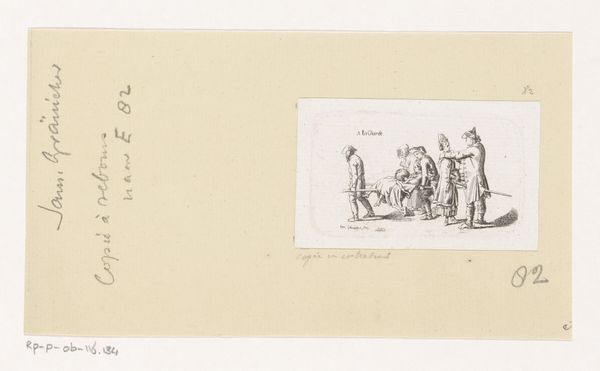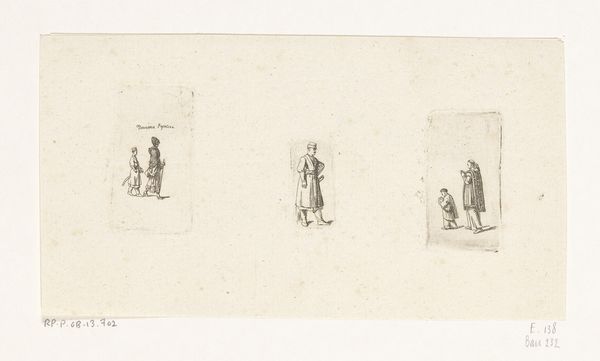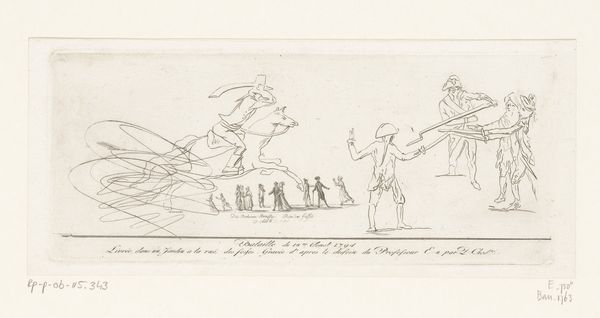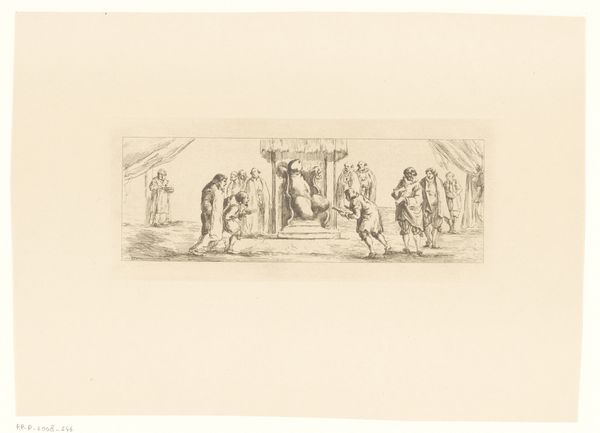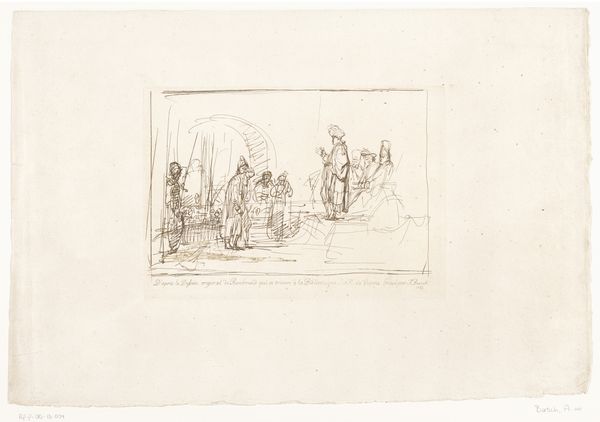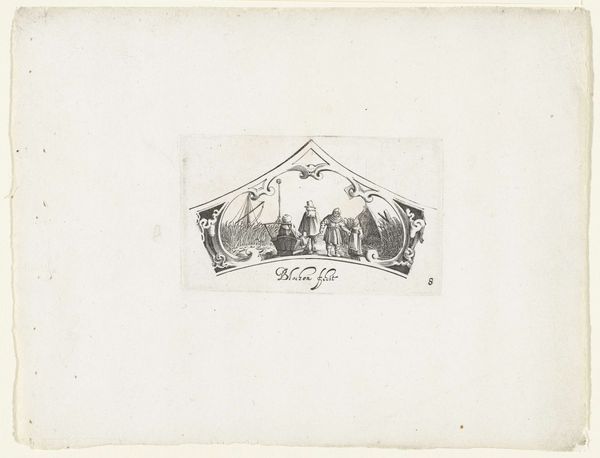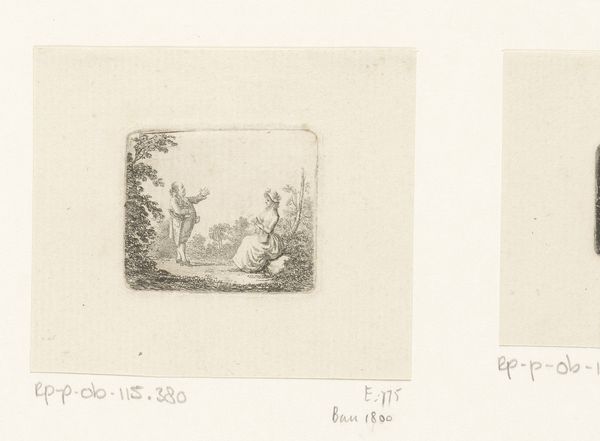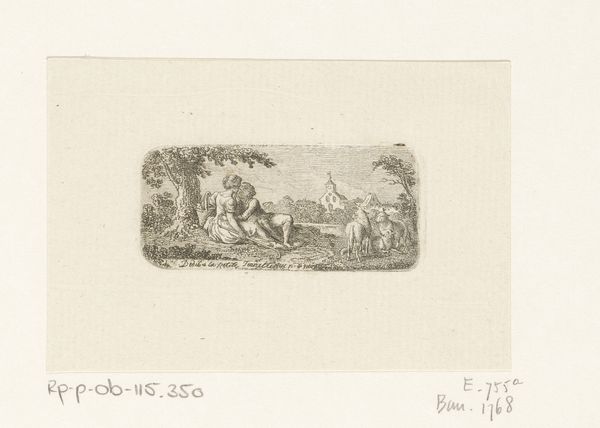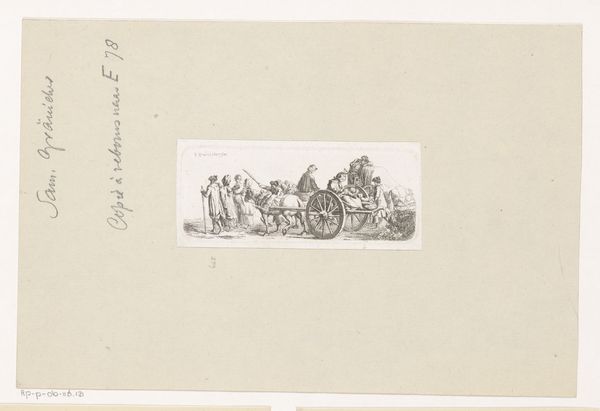
drawing, print, etching, engraving
#
drawing
#
narrative-art
# print
#
etching
#
landscape
#
figuration
#
romanticism
#
history-painting
#
engraving
Dimensions: height 26 mm, width 57 mm
Copyright: Rijks Museum: Open Domain
Editor: Here we have Daniel Chodowiecki’s “Pethion, Marat en het viswijf,” an etching from 1793. It’s quite small and the figures are delicately rendered. What first strikes me is the contrast between the standing figures in the foreground and the diminutive figures journeying along a road in the distance. What do you see in this piece? Curator: Initially, the framing oval draws the eye, isolating the narrative within. Note how Chodowiecki employs line weight: finer, more numerous lines coalesce to form darker tones, providing depth and contrast, whilst sparser lines denote areas of relative light, focusing the eye on Marat’s accuser. Editor: So, it’s less about what’s being depicted and more about *how* it’s being depicted? Curator: Precisely. Consider the arrangement of figures. Observe how they occupy the shallow pictorial space, creating a frieze-like effect. What feeling do you think that might evoke? Editor: A staged, almost artificial feeling, despite the seeming spontaneity of the interaction. Like a snapshot, yet carefully constructed. Curator: Good. Further, consider the surface texture achieved through the etching process. The varied line work creates a tactile quality. Ask yourself, what’s the importance of the relationship between technique and subject matter? How does that relationship change how you interpret the narrative within the artwork? Editor: It makes you question the "reality" of the scene, almost like it’s a fabrication or a commentary, rather than a direct record. That's fascinating; I’ll definitely be looking at prints differently from now on! Curator: Indeed, analyzing form allows us access into a more intricate understanding of the work's construction and, potentially, its intended impact.
Comments
No comments
Be the first to comment and join the conversation on the ultimate creative platform.


